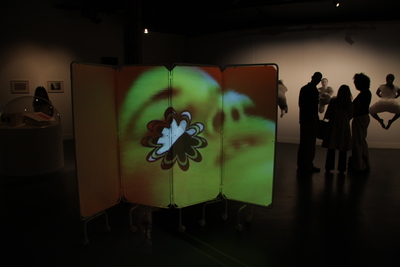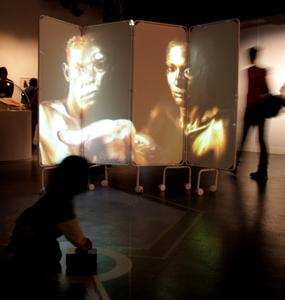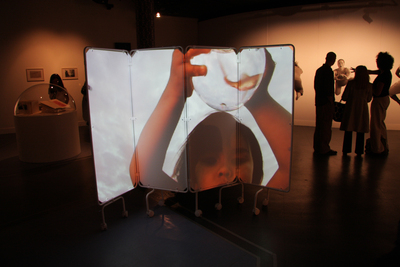Zapp You're Pregnant (2008)
Bloom, Jaygo (2008) Zapp You're Pregnant (2008). [Artefact]
Abstract
The audiovisual installation ‘Zapp You’re Pregnant’ was produced through research examining the philosophical differences between the use of technologies in clinical and creative practices, exploring transformations of gameplay into performance, digital and physical division, and the benefits of working with technology in situations where ‘nature goes awry’. The installation consists of a series of video narratives, created in response to the charted feelings and emotional responses of the expectant mothers whilst resident on the 24-hour ward. Drawing on the work of the media philosopher Vilém Flusser as well as colleagues interrogating the uses and limits of technology (Link, Lunzer, Neidich and Plewe) the artwork offers an alternative view of the birthing process; one which paradoxically is driven by technology, but which exposes the lucid emotions of the labouring mothers. The development of the installation was funded through a £4,500 commission supported by Arts Council England. The work was featured in the ‘Birth Rites’ exhibition and collection, the first and only collection of contemporary art dedicated to the subject of childbirth. Formed from the work produced for the exhibition, the collection is housed in Salford University’s Midwifery department and the RCOG, and is currently being toured. The work engages a variety of audiences and was reviewed in publications ranging from the Guardian (28.05.08) and the Scotsman (27.05.08) to the Artists’ Newsletter (01/08) and Practicing Mid Wife (10.08). The installation was developed through a residency at the Royal Maternity Hospital (RMH). Working with Professor Jim Dornan, Director of Fetal Medicine at the Royal Maternity Hospital, Belfast. Bloom observed obstetric procedures, prenatal screenings, diagnoses and caesarean births to gain a sense of the digital and technological interventions. The installation used this research to explore the entropic disorder associated with alchemical and scientific motifs, drawing comparisons with ancient notions of rebirth and transformation.
Actions (login required)
 |
Edit Item |





![[img]](https://nua.repository.guildhe.ac.uk/17269/1.hassmallThumbnailVersion/Zapp%20Glasgow%20Science%20Centre%2001.jpg)
![[img]](https://nua.repository.guildhe.ac.uk/17269/2.hassmallThumbnailVersion/Zapp%20Glasgow%20Science%20Centre%2002.jpg)
![[img]](https://nua.repository.guildhe.ac.uk/17269/3.hassmallThumbnailVersion/Zapp%20Glasgow%20Science%20Centre%2003.jpg)
